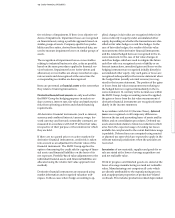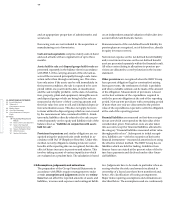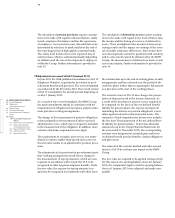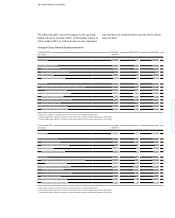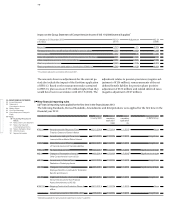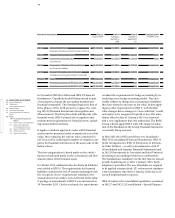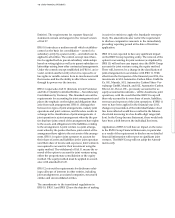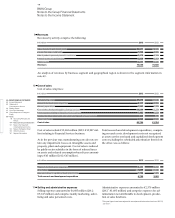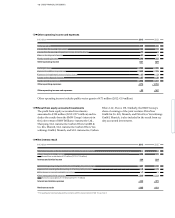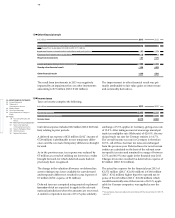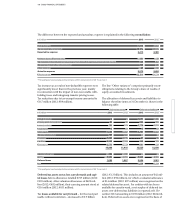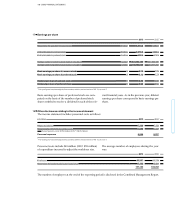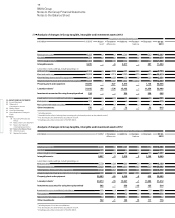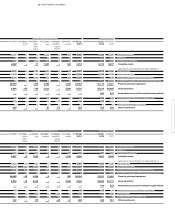BMW 2013 Annual Report Download - page 113
Download and view the complete annual report
Please find page 113 of the 2013 BMW annual report below. You can navigate through the pages in the report by either clicking on the pages listed below, or by using the keyword search tool below to find specific information within the annual report.
113 GROUP FINANCIAL STATEMENTS
Entities). The requirements for separate financial
statements remain unchanged in the revised version
of
IAS 27.
IFRS 10 introduces a uniform model which establishes
control as the basis for consolidation – control of a
subsidiary entity by a parent entity – and which can be
applied to all entities. The control concept must there-
fore be applied both to parent-subsidiary relationships
based on voting rights as well as to parent-subsidiary re-
lationships arising from other contractual arrangements.
Under the control concept established in IFRS 10, an in-
vestor controls another entity when it is exposed to or
has rights to variable returns from its involvement with
the investee and has the ability to affect those returns
through its power over the investee.
IFRS 11 supersedes IAS 31 (Interests in Joint Ventures)
and SIC-13 (Jointly Controlled Entities – Non-Monetary
Contributions by Ventures). This Standard sets out the
requirements for accounting for joint arrangements and
places the emphasis on the rights and obligations that
arise from such arrangements. IFRS 11 distinguishes
between two types of joint arrangements, namely joint
operations and joint ventures, and therefore results in
a change in the classification of joint arrangements. A
joint operation is a joint arrangement whereby the
par-
ties that have joint control of the arrangement have
rights
to the assets, and obligations for the liabilities, relating
to the arrangement. A joint venture is a joint arrange-
ment whereby the parties that have joint control of the
arrangement have rights to the net assets of the arrange-
ment. IFRS 11 requires joint operators to account for
their share of assets and liabilities in the joint operation
(and their share of income and expenses). Joint venturers
are required to account for their investment using the
equity method. The withdrawal of IAS 31 means the re-
moval of the option to account for joint ventures using
either the proportionate consolidation or the equity
method. The equity method must be applied in accord-
ance with amended IAS 28.
IFRS 12 sets out the requirements for disclosures relat-
ing to all types of interests in other entities, including
joint arrangements, associated companies, structured
entities and unconsolidated entities.
The amendments to the transitional regulations in
IFRS 10, IFRS 11 and IFRS 12 have the objective of making
it easier for entities to apply the Standards retrospec-
tively.
The amendments also restrict the requirement
to disclose comparative amounts to the immediately
preceding reporting period at the date of first-time
application.
IFRS 10 is not expected to have any significant impact
on the BMW Group reporting entity. The removal of the
option for accounting for joint ventures (as stipulated by
IFRS 11) will not have any impact since the BMW Group
accounts for joint ventures using the equity method.
There will, however, be a change in the classification of
joint arrangements in accordance with IFRS 11. With
effect from the first quarter of the financial year 2014, the
investments in SGL Automotive Carbon Fibers GmbH &
Co. KG, Munich, SGL Automotive Carbon Fibers Ver-
waltungs
GmbH, Munich, and SGL Automotive Carbon
Fibers LLC, Dover, DE – previously accounted for as
equity accounted investments – will be classified as joint
operations, with the result that the BMW Group will
then only account for its own share of assets, liabilities,
revenues and expenses of the joint operations. If IFRS 11
were to have been applied in the financial year 2013,
changes in presentation of the individual balance sheet
line items affected would have resulted in the balance
sheet total increasing in a low double-digit range (mil-
lion). In the Group Income Statement, there would only
have been a shift between the individual line items.
Application of IFRS 12 will have an impact on the notes
to the BMW Group Financial Statements, in particular
as a result of the requirement to disclose more detailed
financial information with respect to significant joint
ventures. The BMW Group will not adopt the Amend-
ments early.


